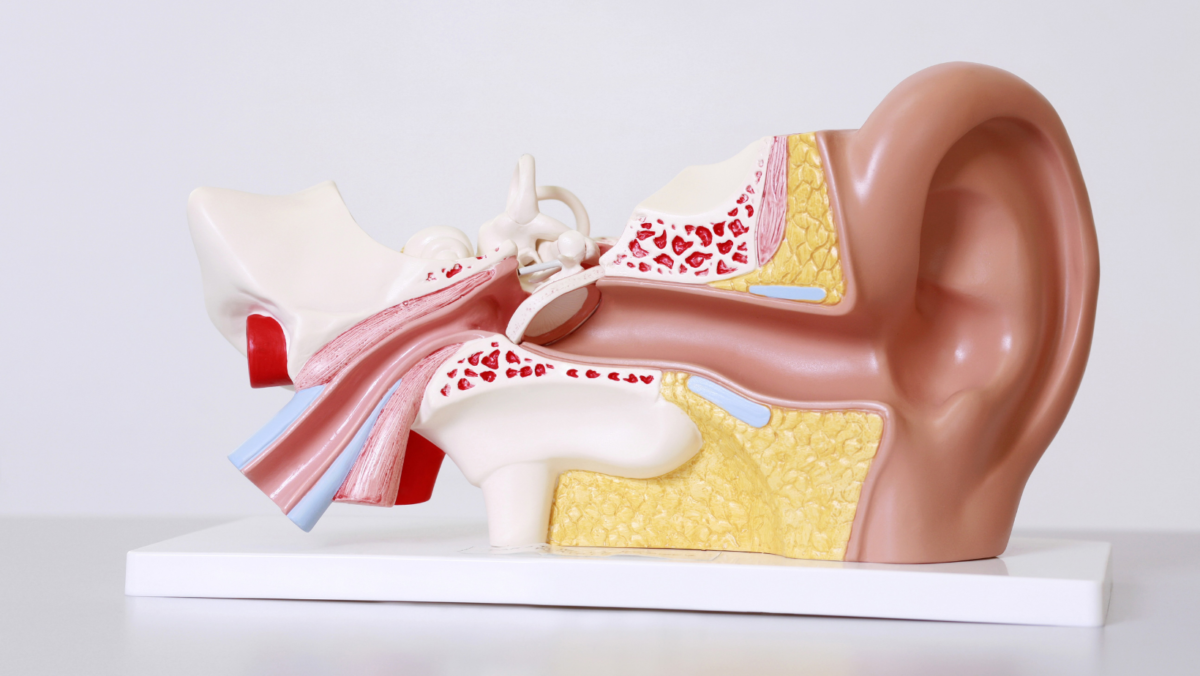
Injuries to the ear can occur in many different sports and in all levels of athletes, from weekend warriors to professionals. Although extremity injuries often receive more attention, anyone participating in a sport should be aware of the basics of ear injuries and their prevention.
Outer ear injuries
The auricle, or outer ear, is the most commonly injured structure in the ear. The auricle is often vulnerable when the head reflexively turns to the side when a player expects a collision. Cauliflower ear, or traumatic auricular hematoma, is common among boxers, mixed martial artists, amateur and professional wrestlers, and participants in jujitsu and rugby. A single or multiple blows can lead to a hematoma (blood clot) forming between the outside and inside of the auricle. If such an injury occurs, it can be treated by draining the fluid and applying antibiotic medication. Letting the injury go untreated can allow pressure to build, causing permanent eardrum injury.

Lacerations (cuts) to the ear are also common. Most lacerations to the outer ear can be successfully treated with general wound care or sutures. Cuts around the ear should be cleaned to ensure that no debris gets entrapped beneath the skin. Minor cuts within the ear canal itself can be treated with antibiotic drops, while more significant lacerations need to be sutured and often packed to help control swelling. Very serious cuts involving the ear canal are best evaluated and treated by an otolaryngologist (ear, nose, and throat specialist).
Swimmer’s ear
Injuries to the ear need not necessarily be traumatic. External otitis, known as swimmer’s ear, is a microbial infection that causes inflammation of the outer ear canal. It can be caused by trapped water after swimming, but it can also be started by seemingly innocuous causes like prolonged showering or overzealous use of cotton swabs to clean the ear. Your physician can diagnose otitis externa by examining your ear canal. Most mild cases can be treated with cleaning the outer ear canal and debris removal; often treatment can be supplemented with topical Burrow’s solution. Once the condition has resolved, the ear once again becomes “self cleaning” and the condition becomes unlikely to recur.
Eardrum injuries
Perforations of the eardrum in sport usually occur following a direct blow to the head. The use of helmets in most organized contact sports has reduced the occurrence of eardrum injuries, but they do occur nonetheless. Often, eardrum perforations heal without treatment. Once an eardrum injury is diagnosed, the athlete should observe commonsense precautions like avoiding swimming or submersions to reduce the risk of an infection.
Benign Positional Vertigo (BPV)
BPV is a disorder of the inner ear that affects the vestibular (balance) system and alters how we perceive our position in space. In the athlete, BPV can interfere with the ability to perform sporting tasks requiring balance and coordination. BPV causes brief, dizzy episodes, often after an abrupt change in position. The person can feel nauseated, although vomiting is uncommon. Treatment for the disorder can include medications and a mechanical technique. Medications can include scopolamine or meclizine, which are prescriptions for motion sickness to help with nausea and dizziness. Definitive treatment includes a mechanical repositioning maneuver, such as the Epley maneuver, which is a series of carefully sequenced motions to move the inner ear calcium buildup causing the vertigo. With successful use of the Epley maneuver, many patients’ vertigo symptoms are completely resolved.
Whether an athlete suffers from a traumatic ear injury, an infection, or a syndrome affecting balance, problems of the ear clearly can affect the athlete’s ability to play and compete at their usual level. Like most sporting injuries, the ear can be effectively managed with diligent attention and prompt treatment. If medical attention is required, your team of sports physicians, including your family physician, orthopaedist, and otolaryngologist, stand ready to provide the expertise and care to help you successfully recover and return to play. If you have injured your ear, do not hesitate to consult your certified athletic trainer or your family physician, who can evaluate your injury and make sure you get the most appropriate and timely care possible.
Author: R. Grant Mostak, MD | Columbus, Georgia
Last edited on November 9, 2021